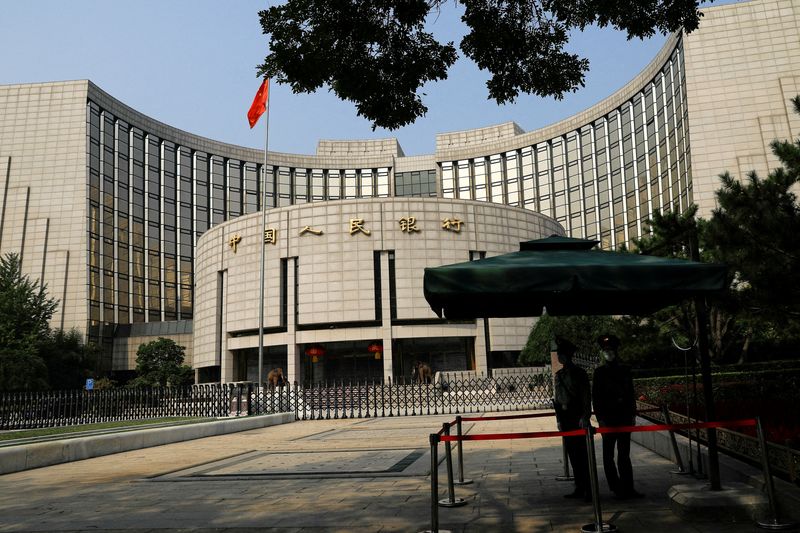SHANGHAI/SINGAPORE (Reuters) -China’s central bank bolstered liquidity support for the economy as it rolled over maturing medium-term policy loans with higher cash offerings for the fifth month on Monday, while keeping the interest rate unchanged as expected.
The slightly higher fund injection would help replenish liquidity gaps created by upcoming tax payments by banks and companies, as policymakers look to inject momentum to the economic recovery.
The People’s Bank of China (PBOC) said it was keeping the rate on 170 billion yuan ($24.75 billion) worth of one-year medium-term lending facility (MLF) loans to some financial institutions unchanged at 2.75% from the previous operation.
Monday’s operation was aimed at keeping “banking system liquidity reasonably ample,” the central bank said in an online statement.
In a Reuters poll of 29 market watchers conducted last week, all participants expected no change to the MLF rate, while 23 forecast fund offerings would exceed maturity.
With 150 billion yuan worth of MLF loans set to expire this month, the operation resulted in a net 20 billion yuan of fresh fund injection into the banking system.
Higher cash offerings could help banks tide over the quarterly tax payment period in mid April, with some brokerages estimating as much as 1.7 trillion yuan could be withdrawn from the banking system.
Some market analysts and traders said stronger-than-expected economic data including exports, credit growth and narrowing contraction in property investments suggested that the recovery from the COVID-19 slump is on track and lowered the chances for an interest rate cut.
“The PBOC probably won’t feel the need to add to broad-based easing, particularly given that credit demand is already recovering,” economists at Capital Economics said in a note.
“It cut the reserve requirement ratio (RRR) in March, but our read was that that move was about offering relief to banks, whose profit margins have been under pressure.”
China is due to report its first-quarter gross domestic product (GDP) and activity indicators on Tuesday.
The PBOC cut banks’ reserve requirement ratio (RRR) for the first time this year in March. It pledged to maintain ample liquidity, stabilise growth and jobs and focus on expanding domestic demand in its latest quarterly meeting of its monetary policy committee.
The PBOC also injected 20 billion yuan through seven-day reverse repos while keeping the borrowing cost unchanged at 2.00%, it said in an online statement.


